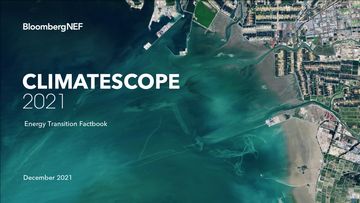Armenia
With a cumulative score of 1.67, Armenia ranks number 33 among emerging markets and number 62 in the global ranking.
- Emerging markets
- Asia-Pacific
1.99 / 5
Power score
0.85 / 5
Transport score
1.50 / 5
Buildings score
Low-carbon strategy
Net-zero goal and strategy
Armenia does not yet have net zero goal or strategy, but a target is under discussion.
Nationally Determined Contributions (NDC)
Armenia submitted an updated ‘nationally determined contribution’ (NDC) in May 2021, which is its official plan to achieve the goals set out in the Paris Agreement. The country’s NDC aims to cut emissions by 40% from 1990 levels by 2030. The main sectors included in its mitigation strategy are energy, industrial processes and product use, agriculture, waste, and forestry.
Fossil fuel phase-out policy
Armenia is highly dependent on fossil fuel imports and does not currently have a fossil fuel phase-out policy.
Power
Power policy
The primary generation technology in Armenia is natural gas, accounting for 41% of total electricity generation. But there has been a large uptake in solar in recent years. The Armenian government had initially been aiming for 21% of electricity generation to come from renewable resources (excluding large hydro) by 2020, rising to 26% by 2025. Neither target was legislated. While the 2020 goal was ambitious, BloombergNEF data estimates that it was met and exceeded. There is a now a goal of 40% of generation to come from renewables by 2025.
Armenia has auctions, a feed-in tariff policy, and net metering to encourage renewable energy uptake. The government is awarding more projects, especially in the solar space. Solar power purchase agreement (PPAs) last for 20 years for feed-in tariffs and up to 50 years for auctions. PPAs are signed in Armenian drams, but are indexed to U.S. dollars.
Power policies
Power prices and costs
Tariffs in Armenia have been constant since 2017. Customers can choose daytime or nighttime tariffs. Due to Covid-19, the government introduced a subsidy to make power cheaper for those who are not able to afford electricity.
Power market
Armenia has a 100% electrification rate and Electric Networks of Armenia (ENA) is the country’s only power distributor and retailer. Net metering is an option for residential and industrial customers, but otherwise ENA buys all the power. Offtaker risk is very low because ENA is a very reliable and must offtake all the generation. However, Armenia is in a lot of debt to Russian energy giant Gazprom, which provides a lot of gas to the country.
Unlike power distribution, generation in Armenia has been unbundled. There are some private companies active in generation outside of autonomous solar energy producers, such as the International Energy Corporation CJSC and Gazprom Armenia.
Installed Capacity (in MW)
Electricity Generation (in GWh)
Utility privatisation
Which segments of the power sector are open to private participation?
Wholesale power market
Does the country have a wholesale power market?
Doing business and barriers
A new government came to power in 2018 and there are significant political tensions with Azerbaijan. The Armenian government has shown a passive stance on renewable investment, discouraging many investors, and there was also a retroactive slashing of wind feed-in-tariffs. In addition, Armenia is in large amounts of debt to Russian energy company Gazprom.
Many of Armenia’s hydropower plants are antiquated. The remaining nuclear power plant will also soon need either an expensive refurbishment or to retire. Armenia had previously rejected financial assistance from Russia for its nuclear assets, but now seems to be accepting this aid.
Currency of PPAs
Are PPAs signed in or indexed to U.S. Dollars or Euro?
Bilateral power contracts
Can a C&I (Commercial and Industrial) customer sign a long-term contract (PPA) for clean energy?
Bilateral power contracts
Can a C&I (Commercial and Industrial) customer sign a long-term contract (PPA) for clean energy?
Fossil fuel taxes
Does the government influence the wholesale price of fossil fuel (used by thermal power plants) up through taxes?
Bilateral power contracts
Can a C&I (Commercial and Industrial) customer sign a long-term contract (PPA) for clean energy?
Fossil fuel subsidies
Does the government influence the wholesale price of fossil fuel (used by thermal power plants) down through subsidies?
Transport
EV market
The electric vehicle (EV) market in Armenia is fairly new. The country does not have a clean transport target, although it has included the intention to increase clean transportation methods in its Nationally Determined Contribution. Armenia has also waived VAT on any imported EVs until the end of 2021, and the government is switching all its vehicles to electric.
EV policy
The government has yet to implement any substantive policy support in this sector and the EV market remains at an early stage.
Transport policies
Fuel economy standards
Does the country have a fuel economy standard in place?
Buildings
Buildings market
The Armenian government implemented the Second National Energy Efficient Action Plan (NEEAP) in 2015, which outlines how the country plans to increase energy efficiency in buildings. This plan applies to all buildings with the goal of making them nearly net-zero.
The majority of heating technology in Armenia is powered by natural gas, and some heating is also provided by direct electric and other sources. The average cost of a heat pump in Armenia is 48,500 Armenian drams. The government does provide some grants for energy efficiency improvements, and policy makers are working to further unlock residential building efficiency financing.
Energy performance standards
Are there minimum energy performance standards for buildings?
Energy efficiency plan
Does the country have a national energy efficiency plan?
Buildings policy
The government has yet to implement any substantive policy support in this sector and the low-carbon heating market remains at an early stage.

